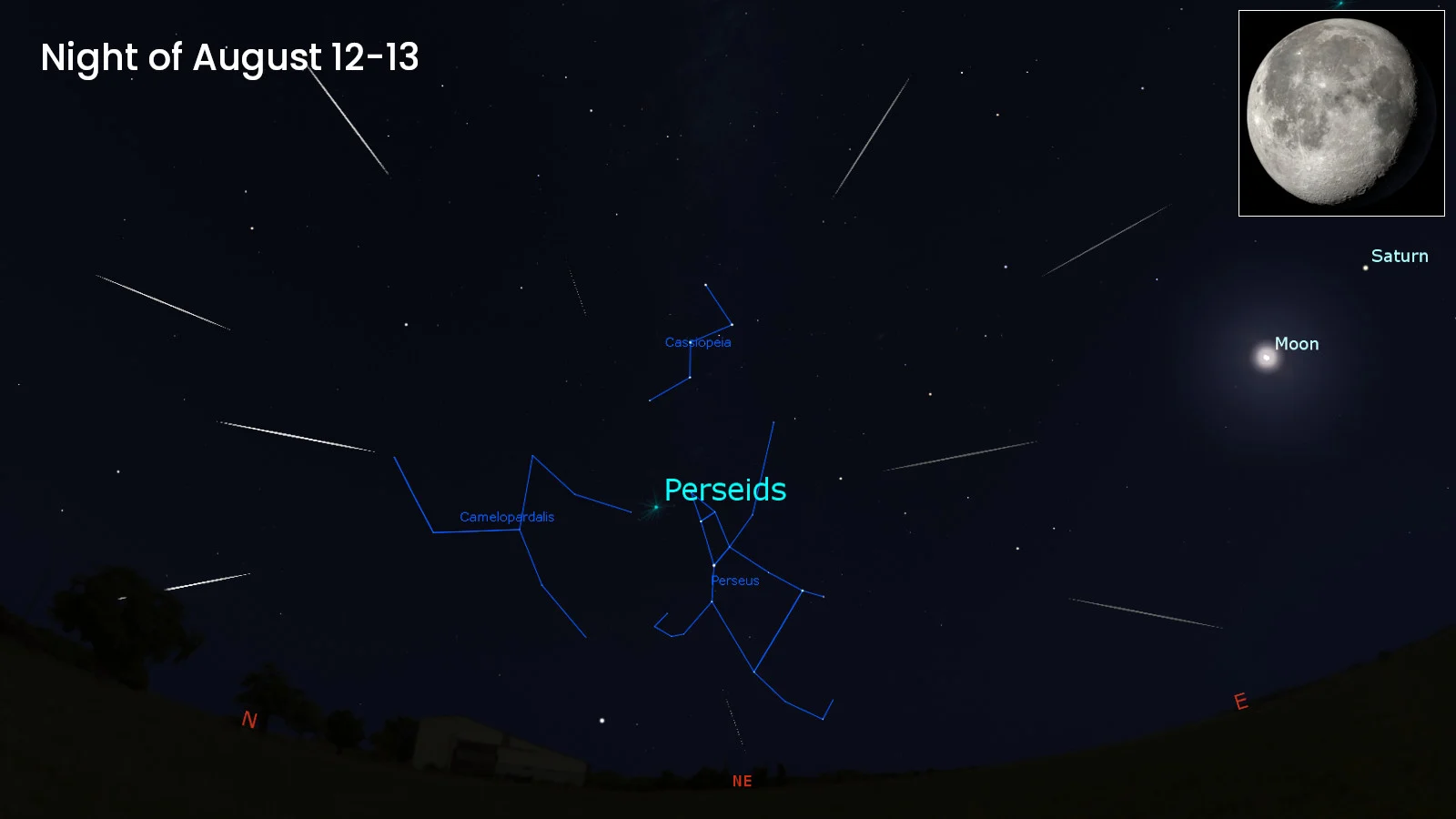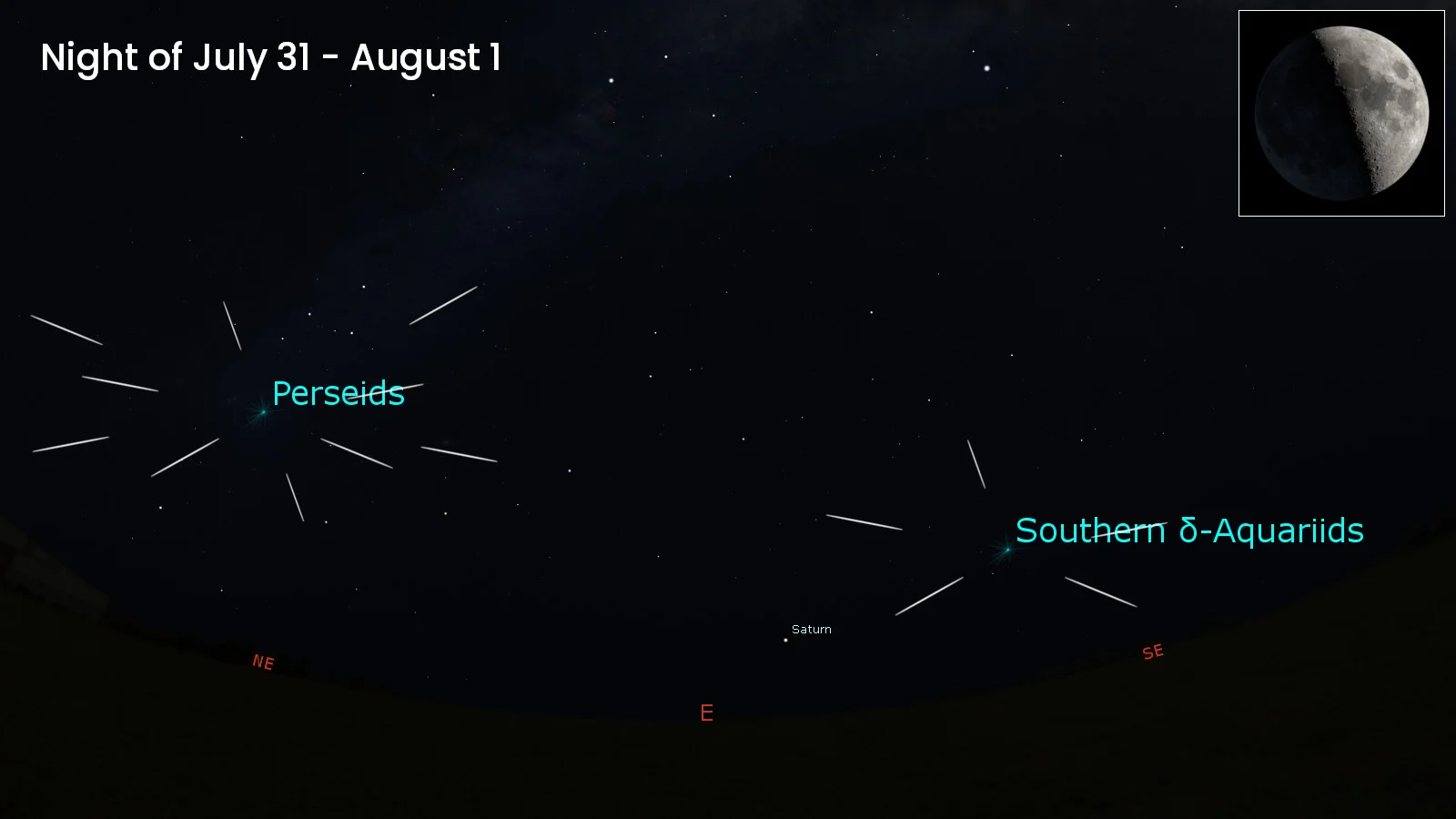
See fireballs and meteors crisscross the night sky over the next month
The Perseid and delta Aquariid meteor showers are both ramping up towards the end of July.
What's better than one meteor shower? Two of them sending streaks of light across the night sky at the same time!
Each year, around the middle of July, our planet Earth plunges into two separate streams of comet debris, each composed of ice and dust that orbits around the Sun. As we fly through these streams, the atmosphere sweeps up the tiny meteoroids directly in our path, which flash through the sky as streaks of light, producing two meteor showers in our night sky.
The first, known as the Perseids, originates from a comet called 109P/Swift–Tuttle. Due to the angle of this comet's path around the Sun, the meteoroids from its debris stream enter the atmosphere from the direction of the constellation Perseus, in the northern sky.

The radiant of the Perseids (the point in the sky the shower appears to originate from) is located in the northeastern sky each night from mid-July through late August. The view in this simulation depicts the night of the peak, on August 12-13, 2025. The phase of the Moon (Waning Gibbous) is shown in the top right corner. (Simulation courtesy Stellarium. Moon phase from NASA's Goddard Scientific Visualization Studio)
The second meteor shower is the Southern delta Aquariids. Although we don't know for sure, this shower appears to come from an oddball comet called 96P/ Machholz. The odd thing about this object is that it's apparently unlike any other comet in our solar system, with a unique orbit and chemical composition. It's even possible that it's an alien comet that was captured by our Sun's gravity as it wandered through interstellar space.
The meteors from this comet's debris stream can be traced back to the constellation Aquarius, in the southern sky. Also, it produces a slightly better show in the southern hemisphere than the north, but we can still still see a decent number of meteors from it if we know when to look.

The radiant of the delta Aquariids is located in the southern sky each night from mid-July through early August. The view in this simulation depicts the night of the peak, on July 31, 2025. The phase of the Moon (First Quarter) is shown in the top right corner. (Simulation courtesy Stellarium. Moon phase from NASA's Goddard Scientific Visualization Studio)
READ MORE: How to get the most out of meteor showers and other night sky events
The Perseids and delta Aquariids begin on July 17 and 18, respectively, although the delta Aquariids can start as early as the 12th. For the first few days of each shower, they produce only one or two meteors per hour.
As we approach the end of July, though, their numbers ramp up. By the last few nights we can be seeing up to 20 Perseid meteors per hour streaking out of the northeast, crisscrossing with up to 20 delta Aquariids per hour from the southeast.
With the timing of the Moon's phases, the nights of the 29th, 30th, and 31st are probably the best time to go out and spot these meteors. This is because the Moon will be off in the west throughout the evening and will set by midnight, leaving most of the night nice and dark for picking out those brief flashes of light in the sky.

This wider simulation of the eastern sky, on the night of July 30-31, 2025, shows the radiants of the Perseid and delta Aquariid meteor showers in their respective spots. The First Quarter Moon is setting on the western horizon at this time, out of view of the observer. (Stellarium)
DON'T MISS: An alien comet is now passing through our solar system. Here's what we know
Once we're into August, the number of Perseid meteors will continue to rise, while the number of delta Aquariids will ramp down.
Even as the total number of meteors increases, night by night, we'll unfortunately run into a problem from the Moon. During the first two weeks of August, the Moon will be casting off quite a bit of light as it passes through its brightest phases — Waxing Gibbous from the 2nd-7th, the Full Sturgeon Moon on the 8th-9th, and Waning Gibbous from the 10th-15th. The added moonlight will wash out the sky, especially on humid August nights, causing us to miss many of the dimmer meteors. This includes the night of the 12th-13th, when the Perseids reach their peak.
Normally, at the Perseids' peak, observers under clear dark skies have a chance to spot up to 75-100 meteors every hour. This year, with only the brighter meteors shining through, we will likely see closer to 40-50 per hour. Weather conditions could reduce that even further.
Fortunately, the Perseids are well-known for being the meteor shower that produces the greatest number of fireballs!
Watch below: Perseid fireball captured by NASA all-sky camera
Fireballs are exceptionally bright meteors that are easily visible for hundreds of kilometres around on clear nights, even for observers trapped under heavily light-polluted skies.
After the peak of the Perseids, we can still spot meteors from the shower as it ramps down, right up until August 24. So, watch for clear skies in your forecast and keep an eye out for meteors and fireballs flashing through the night.
